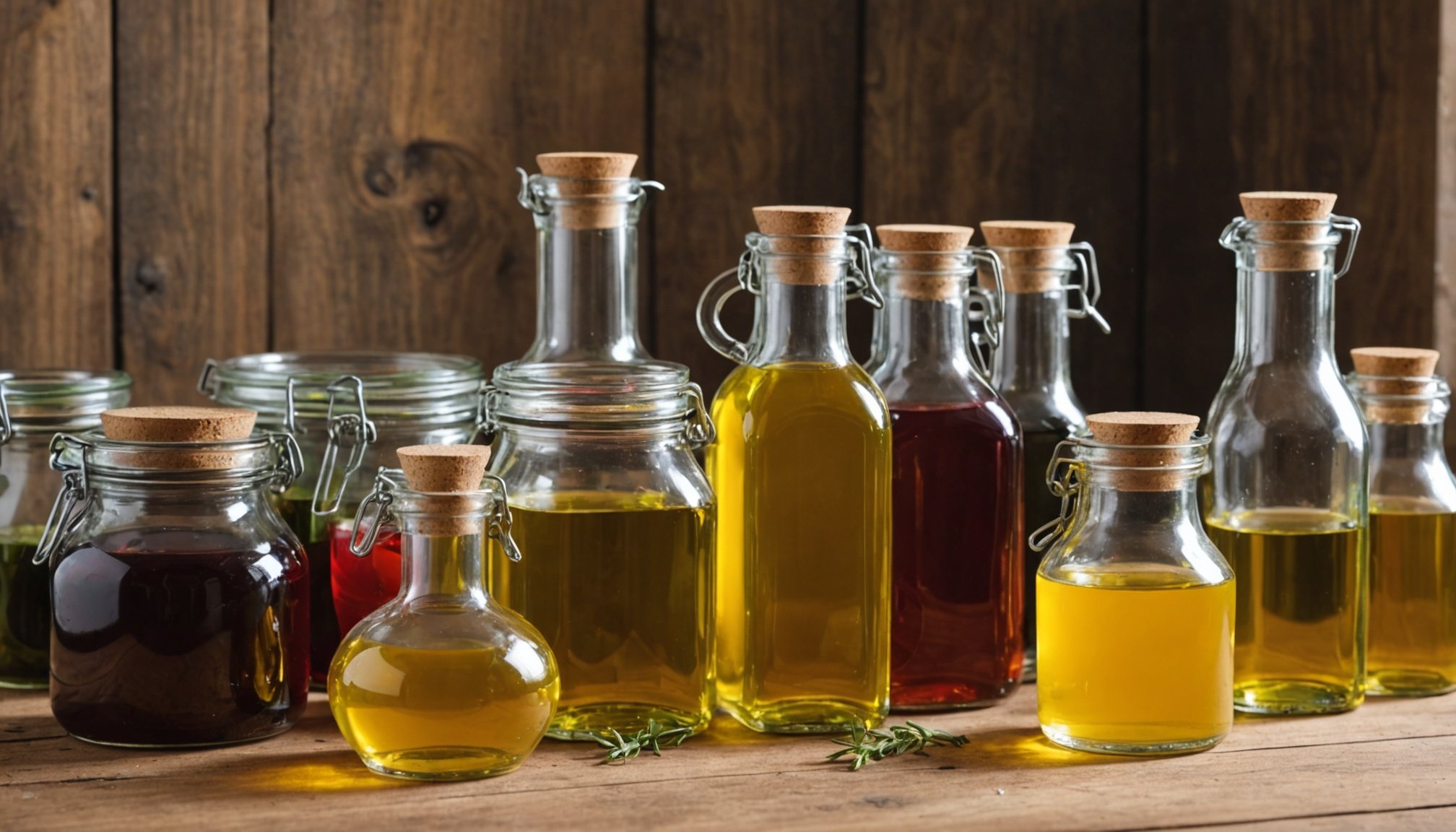Cooking oils are kitchen essentials that require proper storage to maintain their freshness and flavor. Neglecting this can lead to rancidity and diminished cooking quality. Discover useful techniques to keep your oils in top condition, ensuring optimal taste in your dishes. From choosing the right containers to finding the ideal storage locations, understanding these essential storage techniques will elevate your culinary experience. Explore how small changes can make a big difference in preserving the integrity of your favorite cooking oils.
Importance of Proper Cooking Oil Storage
Understanding the nuances of cooking oil storage is crucial for maintaining the oil freshness and ensuring the highest quality in your culinary creations. Proper storage directly influences the quality maintenance of the oil, preserving its flavor and nutritional value.
Have you seen this : Discover the Best Lighting Solutions to Transform Your Kitchen into a Warm and Inspiring Culinary Space
Storage conditions can significantly impact the oil's quality and flavor. Exposure to light, heat, and air can lead to oxidation, causing the oil to become rancid. This not only affects the taste but also diminishes the health benefits. Therefore, storing oil in a cool, dark place is essential.
Risks of Improper Oil Storage
The risks of improper oil storage are manifold. Rancid oil not only tastes unpleasant but can also produce harmful compounds. Understanding the shelf life of various oils is vital to avoid these risks. For instance, olive oil generally lasts longer than flaxseed oil, which is more prone to spoilage.
Topic to read : Choosing the Best Kitchen Countertop Materials to Combat Bacterial Growth: A Comprehensive Guide
- Impact on Flavor: Rancid oils can ruin the taste of dishes.
- Health Concerns: Spoiled oils may contain free radicals.
- Economic Loss: Inefficient storage leads to waste.
Importance of Understanding Oil Shelf Life
To maximize oil freshness, always check expiration dates and adhere to recommended storage practices. This ensures that your oil remains a beneficial and flavorful ingredient in your kitchen.
Recommended Containers for Cooking Oils
Choosing the right storage containers for cooking oils is essential for preserving their quality and flavor. Different types of oils require specific containers to maintain their freshness and prevent spoilage.
Types of Containers
Selecting suitable oil bottles can make a significant difference. Dark glass bottles are highly recommended as they protect oils from light exposure, which can lead to oxidation. Stainless steel containers are another excellent option, offering durability and a barrier against light and air. These materials help in maintaining the oil's nutritional value and taste.
Benefits and Drawbacks
Using airtight containers is crucial to minimize air exposure, which can cause oils to become rancid. However, it is advisable to avoid plastic containers. Plastics can leach chemicals into the oil, affecting its quality and safety. They may also allow light and air to penetrate, accelerating spoilage.
- Dark Glass: Blocks light, preserves flavor
- Stainless Steel: Durable, non-reactive
- Plastic: Potential chemical leaching, less effective
By choosing the right storage containers, you can ensure that your oils remain fresh and flavorful, enhancing your culinary creations while maximizing their health benefits.
Optimal Storage Conditions for Cooking Oils
Understanding the right oil storage conditions is essential for preserving quality.
Temperature Control
Temperature plays a crucial role in maintaining the freshness of cooking oils. Ideally, oils should be stored at temperatures between 50°F and 70°F. For example, olive oil benefits from cooler temperatures, while coconut oil remains stable at slightly higher temperatures. Consistent temperature control prevents the oil from spoiling prematurely.
Light Exposure
Light exposure can significantly degrade oil quality. When oils are exposed to light, they undergo oxidation, leading to rancidity. This process not only affects flavor but also reduces nutritional value. To mitigate these effects, store oils in dark glass bottles or stainless steel containers, both of which offer protection against light.
Best Practices
To maintain optimal oil storage conditions, it's crucial to keep oils away from heat sources such as stoves or direct sunlight. A pantry or cupboard is ideal.
- Avoid Heat: Store away from ovens and sunlight
- Consistent Temperature: Maintain between 50°F and 70°F
- Use Protective Containers: Dark glass or stainless steel recommended
By following these practices, you ensure your oils remain fresh, flavorful, and nutritious, enhancing your culinary endeavors.
Shelf Life of Various Cooking Oils
Understanding the oil shelf life is essential for maintaining freshness.
Overview of Shelf Life
Different cooking oils have varying shelf lives. Olive oil, for example, can last up to 18 months if stored properly. In contrast, flaxseed oil has a much shorter lifespan, often only lasting a few months. Canola oil and vegetable oil typically last about a year. Always check the expiration dates on the packaging to ensure the oil's longevity.
How to Determine if Oil Has Gone Bad
Recognizing when oil has spoiled is crucial. A change in color, smell, or taste can indicate that the oil is no longer good. Rancid oils often emit a sour or bitter odor, which is a clear sign of spoilage. If in doubt, perform a small taste test to confirm.
Signs of Rancidity
Knowing the signs of rancidity helps in identifying spoiled oils. Look for:
- Off-putting Odor: Sour or bitter smell
- Unusual Taste: Bitter or metallic flavor
- Cloudy Appearance: Especially in clear oils
These indicators are vital for ensuring that your oils remain a beneficial and flavorful part of your kitchen. By understanding the oil shelf life and recognizing signs of rancidity, you can make informed decisions and avoid potential health risks.
Common Mistakes in Cooking Oil Storage
Understanding the pitfalls of oil storage mistakes can help maintain the quality and longevity of your cooking oils.
Frequent Errors Made When Storing Oils
One common mistake is storing oils near heat sources, such as stoves or ovens. This can accelerate spoilage by increasing the rate of oxidation. Another error involves using transparent containers, which expose the oil to light and degrade its quality.
Misconceptions About Refrigeration and Freezing
Many believe that refrigeration or freezing is suitable for all oils. However, this is a misconception. While some oils benefit from cooler temperatures, others, like olive oil, can become cloudy or solidify, which may alter their texture and flavor.
Tips for Maintaining Oil Quality Over Time
To preserve oils effectively, consider the following tips:
- Store in Cool, Dark Places: Avoid heat and light exposure.
- Use Appropriate Containers: Opt for dark glass or stainless steel.
- Monitor Expiration Dates: Regularly check for spoilage signs.
| Mistake | Impact |
|---|---|
| Storing near heat sources | Accelerates spoilage |
| Using transparent bottles | Increases light exposure |
| Refrigerating all oils | Alters texture and flavor |
By avoiding these improper storage practices, you can enhance oil preservation and ensure your oils remain fresh and beneficial in your kitchen.
Addressing Common Questions about Oil Storage
Exploring essential insights into cooking oil preservation
Clarifying Misconceptions about Oil Storage Methods
Many individuals hold misconceptions about oil storage that can compromise the quality and longevity of cooking oils. A prevalent belief is that all oils should be refrigerated to prolong their shelf life. However, refrigerating certain oils, like olive oil, can cause them to become cloudy or solidify, altering their texture. Understanding the specific needs of each oil type is crucial for effective oil preservation.
Answering Popular Queries Regarding Oil Longevity
A frequent question is how long different oils remain fresh. Common cooking oil questions include inquiries about the shelf life of oils like canola and flaxseed. While canola oil can last up to a year when stored properly, flaxseed oil tends to spoil faster due to its polyunsaturated fats. Recognizing these differences aids in maintaining oil quality.
Expert Recommendations for Best Practices in Oil Handling
To ensure optimal oil preservation, experts recommend adhering to specific storage practices.
- Store in Cool, Dark Places: Protects against heat and light exposure.
- Use Dark Glass or Stainless Steel Containers: Minimizes oxidation.
- Regularly Check Expiration Dates: Prevents usage of spoiled oils.
| Oil Type | Recommended Storage |
|---|---|
| Olive Oil | Cool, dark place |
| Canola Oil | Cool, dark place |
| Flaxseed Oil | Refrigeration |
These strategies enhance the longevity and quality of your cooking oils.













